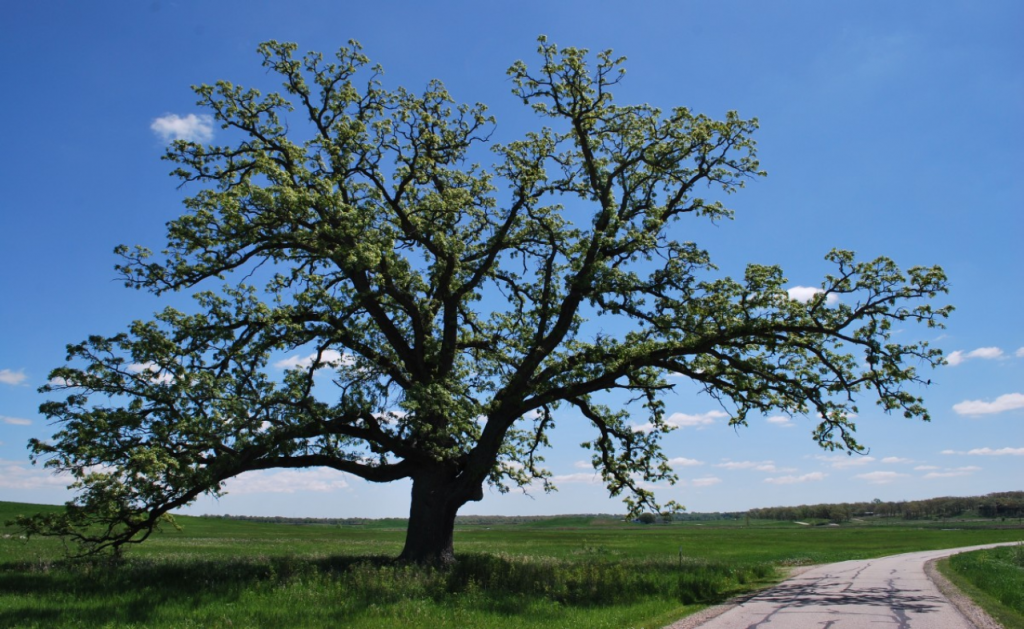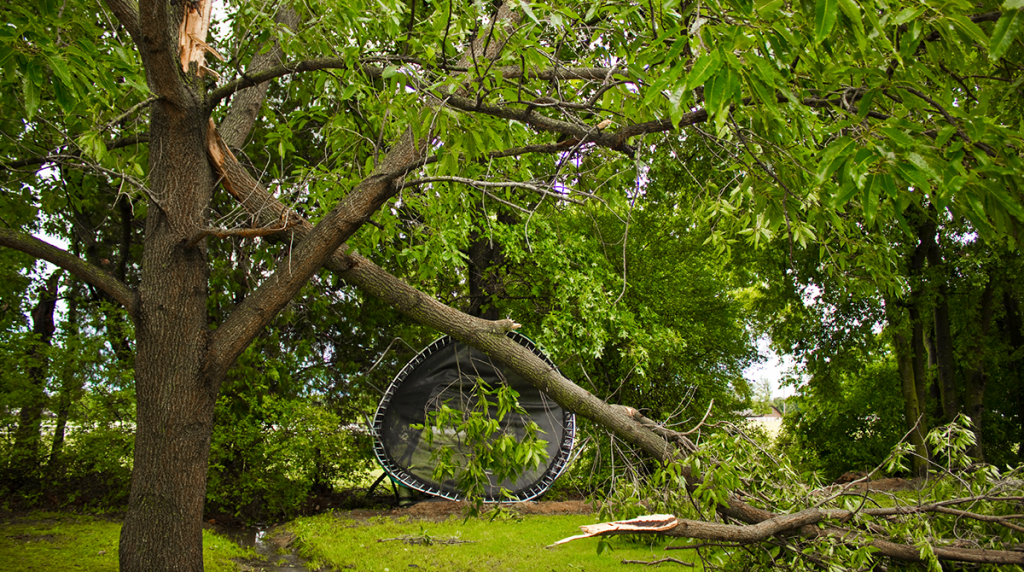
Rapid Decline of Post Oaks in North Texas
Date July 26, 2021
Category
Post Oaks are some of the most widespread types of Oak trees in Texas. You’d think that would mean that they are exceptionally hardy, and in some ways, they are. They flourish in terrains where other trees wouldn’t survive, but they’re also known to be somewhat finicky. They don’t always thrive in urban settings, and they’re notorious for being difficult – if not outright impossible – to transplant. Their demanding nature makes them prone to what tree care professionals call Rapid Decline, which is when a tree shows sudden signs of a decline in health and vigor or dies seemingly out of nowhere. If you have a Post Oak tree on your property and want to know more about the Rapid Decline of Post Oaks in North Texas, below is our guide to these interesting trees and how to care for them.
A little about Post Oak trees
Post Oak trees (Quercus stellata) are medium-sized, deciduous trees in the White Oak family. They are extremely prolific throughout Texas. They’re important to our wildlife because of the massive amounts of acorns they produce. They thrive in rural environments where they’re left undisturbed because they tend to get stressed or die when the soil around their roots is tampered with or compacted, which is why they’re so difficult to transplant. However, they can also be found in urban environments, especially if they’re native to that location. They’re generally found in dry, sandy soils or gravelly clay soils. They can flourish in places where the soil is lacking in nutrients or organic matter. They are drought tolerant and can handle areas with little moisture.
Why are Post Oak roots so sensitive to disturbance?
Although they’re found in various terrains and can handle conditions that would kill other trees, Post Oaks are famous for their sensitive roots. Any soil or root disturbances can cause irreversible damage that often leads to death. This can all happen in a matter of days or weeks, hence the name “Rapid Decline.” If the soil around their roots gets tamped down and restricts the amount of oxygen available to the tree, if the tree is overwatered, if the soil is added or removed around the tree, if its roots are paved over, or if its roots are forced to compete with certain types of grass or ivy for nutrients, these are all things that can cause Rapid Decline and death for Post Oak trees. Post Oak trees appear to be so sensitive to soil disturbances because their root systems are arranged. Their roots are often shallow, which makes them vulnerable to damage. Like all trees, they need the right balance of soil, air, water, and nutrients to thrive, but with roots so close to the surface, it’s easier for the balance to be thrown off by things like construction.
Rapid Decline of Post Oaks
This year, in particular, there has been a spike of concern from homeowners and property owners about their Oak trees dying in Texas due to the extreme weather we’ve been experiencing. Although experts have warned homeowners not to be too hasty about removing their Oak trees as they could still make a recovery, property owners should be watchful of signs of Post Oak Decline. The winter storm we experienced in mid-February weakened and possibly damaged or killed many of our North Texas trees. Then the unusually high amount of rain we’ve experienced this spring has compounded the stress. With Post Oaks being so susceptible to extreme weather conditions by nature, especially wet conditions, they are likely to suffer adverse effects. If your tree is experiencing Rapid Decline, you’ll notice the following signs:
- The first thing you might notice is the leaves on your tree suddenly turning prematurely yellow (chlorosis), brown, or dying throughout the tree’s canopy.
- As the leaves drop off, you might notice that the canopy appears to be unusually sparse or thin.
- In other cases, leaves might remain on the tree as the tree dies.
- There might be twig or branch dieback.
- If you don’t notice the early signs, you might not recognize the Rapid Decline until the tree dies, or in some cases, whole groups of trees.
What can you do to avoid Rapid Decline of Post Oaks?
It can be difficult to rehabilitate a Post Oak once Rapid Decline has begun. The best thing is to keep your Post Oaks healthy by making sure the soil has proper drainage and aeration, ensuring (as much as you can, at least) that they’re not being overwatered, and using proper mulching techniques to help maintain the right conditions for the tree’s roots. You might also need to thin out any competing plants, shrubs, or trees. If you have questions or concerns about your soil conditions or the health of your Post Oak, you should contact a certified arborist who can assess your soil, property, and tree and come up with a customized health care plan for your unique landscape.
Could my Post Oak have Oak Wilt?
During the spring, tree care professionals warn property and homeowners not to prune Oak trees because March through June is peak Oak Wilt season. When Is the Best Time of Year to Prune My Live Oaks?. Oak Wilt disease is a particularly deadly disease in Oak trees. It’s a vascular wilt pathogen, and once the fungus infects a tree, it invades and cripples the tree’s water-conducting systems and quickly kills the tree. The good news is that Post Oaks are not as highly susceptible to Oak Wilt disease as Red Oaks or Live Oaks in Texas. However, Oak Wilt can attack any Oaktree of Texas and infect and kill Post Oaks. There are some Oak Wilt treatments available that could prolong the life of a Post Oak tree that has been infected with Oak Wilt, but it will most likely never return to full health even with treatment. Therefore, the best treatment is prevention, and the most effective way to avoid spreading Oak Wilt is to avoid Oak tree trimming and Oaktree pruning from March through June. If you notice sections of your Post Oak tree appear to be dying, you should contact a certified arborist immediately.
Is your Post Oak showing signs of stress? Call today! TreeNewal’s ISA Certified Arborists can help.
If you’ve noticed your Oak trees are showing signs of stress, Rapid Decline, Oak Wilt, or possible attacks by any other diseases or pests, you should contact a professional tree care company immediately. TreeNewal’s ISA Certified Arborists are highly trained and equipped to handle any needs about Texas Oak trees. We offer the kind of solutions and prevention techniques for Oak decline Texas property owners can trust. Plus, our certified arborists have earned official Oak Wilt Qualifications by undergoing specialized training to identify, prevent, and treat Oak Wilt disease. Beyond handling pest and disease control for your Oak trees, our team of tree care experts, tree doctors, and tree surgeons can help with other important tree care services like trimming Oak trees, pruning Oak trees, root aeration, tree removal, stump removal, and much more. We care deeply about tree health care and protecting your trees from disease, pests, fungus, and any other ailments. For more information, go to our website at treenewal.com. To set up an appointment, call us at tel:(817) 592-6846.
To learn more about Rapid Decline of Post Oaks in North Texas, TX, call our Argyle and Southlake-based teams
at tel:(817) 592-6846 or send us a message.
We’re a little different than the average tree services company.
Learn more about TreeNewal’s ISA Certified Arborists!
Our Dallas/Fort Worth-based tree doctors can explain how sustainable tree care services add more value to your bottom line.
Healthy trees, healthy lives.








